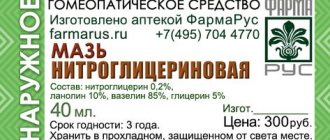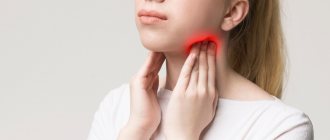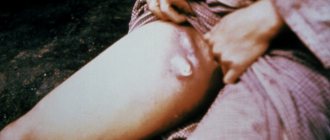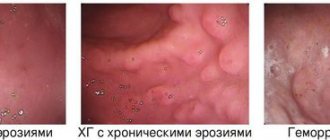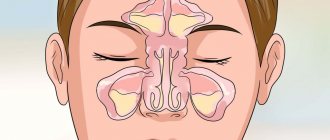How to treat pruritus in adults at home
Prurigo is a polyetiological skin disease of neuroallergic nature. Another name for the pathology is prurigo, which means “itch” in Latin. It is not for nothing that the disease is named so, since the main manifestations are a rash, which is accompanied by intense, obsessive itching.
There are children's prurigo (strophulus, childhood urticaria), adult and nodular (neurodermatitis nodosum). The last two can have an acute and chronic course. Prurigo in adults is quite rare. Statistics say that about 2% of patients who consult a dermatologist have this problem.
Causes
The main factor is sensitization of the body. The result is allergic inflammation of the skin.
Irritants:
- in infants - cow's or breast milk protein;
- for older children - eggs, baked goods, strawberries, chocolate, some types of fish, mushrooms;
- provoke pruritus in adults - honey, smoked meats, spices, spicy foods, alcohol.
Other causes of pruritus:
- disruption of the biliary tract;
- neurasthenia;
- sleep disorder;
- hereditary tendency to allergic reactions;
- helminthic infestations;
- dysbacteriosis;
- tumors of internal organs;
- cholecystitis;
- chronic hepatitis;
- lymphogranulomatosis.
Scientists drew attention to the seasonality of the disease in rural areas. Many researchers are sure: prurigo occurs from insect bites - ticks, mosquitoes, fleas.
Pathogenesis
In the formation of a pathological process, leading importance is given to the sensitization of the body by various kinds of sensitizers (food, medicinal, insect, environmental, helminthic infestations, enzymopathies, metabolic disorders, tumors, etc.). A significant role in the development of prurigo, especially in children, is played by psycho-emotional development, the connection of which with skin diseases is clearly established.
The syndrome of vegetovisceral dysfunctions is of greatest importance in the development of allergic dermatoses, in which there are functional disorders of the gastrointestinal tract, dysbacteriosis , secondary enzyme deficiency, malabsorption/nutrition disorders, which creates a vicious circle.
Classification
This neurodermatosis has four main types:
- Adult (prurigo, Beignet's prurigo) is a type of dermatosis that is most common in old age. Often this disease also manifests itself in adults who suffered from diathesis or urticaria in childhood. In most cases, the appearance of a rash is provoked by food products or autointoxication of the body, which occurs due to improper functioning of the gastrointestinal tract or due to other diseases.
- Infantile prurigo (strophulus, papular urticaria) is an allergic skin disease that most often occurs in children aged one to 5 years, but can occur earlier: during teething or as a reaction to a new product. Children with exudative diathesis, dysbacteriosis, or gastrointestinal pathologies are especially prone to pruritus. The disease manifests itself in the form of dense blisters filled with serous fluid, or a very itchy small rash with dense papules.
- Senile (senile itching) - affects people over 70 years of age who suffer from various pathologies of the endocrine system, atherosclerosis, and metabolic disorders. With age and as a result of various diseases, most of which have already become chronic, the skin becomes dry and flaky, attacks of night itching appear, and then a rash characteristic of pruritus appears.
- Nodular prurigo (also called Hyde's pruritus) is a rare form of dermatosis to which women with an unstable psyche or reduced immunity are predisposed. Most often, the provoking factor in the development of the disease is regular stress or severe nervous shock. The risk group also includes people suffering from endocrine pathologies, diseases of the biliary system and liver.
Why does it arise?
This diagnosis is most often given to young women. Those at risk include those who suffer from infectious diseases, gastrointestinal diseases, and often experience stress and depression. If the removal of condylomas or papillomas is always prescribed for certain symptoms and the reasons for their appearance are quite clear, then in the case of prurigo, everything is not so clear. Scientists have not yet determined the exact reasons for its occurrence. Most are inclined to think that the disease develops against the background of poisoning, endocrine disorders or stress.
Children's pruritus - symptoms
The childhood form of prurigo usually begins with the characteristic appearance of rashes on the skin, which can take the form of nodules no larger than 5 mm in size. After some time, small bubbles may appear on the surface of such rashes.
If such bubbles burst, then in their place point erosions are formed, which are covered with a special type of crusts - these are serous crusts. It should also be said that in addition to the rash located on the skin of the face and torso, such rashes can also be concentrated on the surface of the extensor limbs. Interestingly, the location of papulovesicles can be both on the skin of the palms and the skin of the feet. Their size can reach about 5-6 mm, they can have an edematous base and a special inflammatory rim. The main distinguishing feature of prurigo is the very strong itching that is unique to it. If you scratch the areas affected by scabies, a large amount of excoriation may appear.
In addition to the main symptoms, children may experience various neuropsychic disorders, for example, poor sleep, previously uncharacteristic moodiness, increased levels of irritability, and tearfulness. Such symptoms can be explained both by prurigo itself, accompanied by severe itching and general autointoxication of the body, and by congenital instability of the nervous system.
Very often, it is typical for patients suffering from pruritus that the symptoms may disappear after, for example, milk is excluded from the diet. However, there are also cases when infantile prurigo transforms into pruriginous eczema or atopic dermatitis. The main sign of such a change may be the appearance of white-type dermographism or a reduced type of abdominal reflex, as well as the possible disappearance of the plantar reflex. Children with prurigo may have characteristic dry skin, enlarged femoral (or inguinal) lymph nodes, or anhidrosis.
Diffuse neurodermatitis - prurigo Beignet
April 2, 2019
(Neurodermitis diffusa infantum s. prurigo Besnier) Synonyms: prurigo diffusa chronica cum lichenificatione; atopic dermatitis; eczema constitutionale; eczema pruriginosum; prurigo diathetica; spatexsudatives Ekzematoid (Rost).
Definition
There are still many unclear questions and disputes about the nature and clinical individuality or identity of diffuse neurodermatitis, Besnier's prurigo and atopic dermatitis and their similarity with eczema and other “pruriginous” processes.
Currently, the prevailing opinion is that diffuse neurodermatitis, Besnier's pruritus and atopic dermatitis by American authors are identical diseases. Confusion exists particularly regarding the relationship between them and true childhood eczema. The latter is also called constitutional or atopic eczema by many authors; At the same time, it is noted that childhood eczema at an older age “transitions” into Beignet’s prurigo, diffuse neurodermatitis or atopic dermatitis. We do not share this opinion about childhood eczema. In our opinion, there is true childhood eczema, already described above, which usually disappears without a trace by the end of the second year. In addition, there is a type of eczema in older infants and small children, which is the first expression of diffuse neurodermatitis or diathesis pruritus of Beignet or atopic dermatitis. It does not go away by the end of the second year of life, but continues after that, sometimes throughout life: it is characterized by a number of morphological, evolutionary and general symptoms, which individualize it.
Beignet describes as prurigo diathesique a chronic disease characterized by severe itching, with polymorphic changes in the skin. It usually begins in the first months of life. Morphological changes in the skin at this stage of development resemble dry subacute eczema processes, and therefore German dermatologists classified this disease as a group of chronic eczema, where it appeared for a considerable time. Typically, these eczema inflammations were preceded by severe itching, easily leading to lichenification of the skin, which made it impossible at this stage to differentiate this disease from diffuse neurodermatitis. A special evolution of the disease, which begins in infancy and early childhood, a special localization of changes, combination or alternation with a number of other allergic manifestations (asthma, asthmatic bronchitis, hay fever, strophulus, swelling of the lymph nodes and in general the presence of more pronounced symptoms of a general disorder of the whole body) , constitute the distinctive features of diathesis prurigo Besnier.
Under the name neurodermatitis, a group of pathological skin processes was described (Broc), primarily one limited and one diffuse form characterized by severe itching, lichenoid papules and typical lichenification. Both in limited and, especially, in diffuse forms, the rash resembles subacute and chronic eczema processes; therefore, some authors classified neurodermatitis as chronic eczema. In its development, general symptoms and pathogenesis, neurodermatitis in infants and young children, especially its diffuse forms, does not differ from Besnier's pruritus. Therefore, regardless of the debate about whether diffuse neurodermatitis in adults should be identified with Besnier’s prurigo, we believe that in infancy and childhood these are identical diseases.
The name “atopic dermatitis” introduced by American authors does not provide anything new for the morphology, evolution and nosology of the described dermatoses, but. is just a new name for neurodermatitis, Beignet's prurigo and similar processes. When creating this name, we proceeded from the assumption that the atopic diathesis of Coca (A. Coca) is involved in the pathogenesis of these processes. Extending this concept to the clinic, as L.P. Mashkilleyson says, is not necessary. It only burdens the already complex dermatological terminology. We particularly disagree with the complete identification of childhood eczema with atopic dermatitis. The essence of diffuse neurodermatitis (Besnier's prurigo) in infancy and childhood. For a long time, authors have noticed, and are still noticing, various features in cases of childhood eczema. The combination of these features is characteristic of the third type (after seboroid dermatitis and true childhood eczema) of eczema reaction in infancy and childhood - neurodermatitis or Beignet's pruritus.
Onset of the disease
Neurodermatitis also occurs in the first months of life, but in general later than true childhood eczema. In some cases, children 4-5 years old can also get sick. In a word, any eczema that begins after the 4-5th month of life in infancy and childhood can raise suspicion of neurodermatitis. Morphology and localization. The histopathological picture of neurodermatitis corresponds to the picture of subacute and chronic eczema with more pronounced acanthosis and an almost complete absence of intraepidermal vesicles. At the beginning of its development in infancy, with relapses and exacerbations of neurodermatitis, the lesion in children can be erythemo-edematous and wet, completely reminiscent of true childhood eczema. However, with careful observation, you can find that with neurodermatitis, the affected skin is drier, prone to lichenification, weeps less, and weeps for less duration. In later and more typical cases, the eruptive element is a lichenoid nodule, and simultaneously with eczema-like plaques, individual papulo-urticarial or papulovesicular elements appear, reminiscent of a strophulus rash. Also, in later stages, the skin in the affected areas begins to infiltrate, thicken, become covered with abrasions, crusts, lichenify and darken. The changes, especially at the beginning, are localized mainly on the face, and along with the cheeks, the forehead is often affected. At the same time, changes gradually appear on the back of the head, in the elbow and popliteal folds, around the mouth, on the hands, in the genital area, on the inner surfaces of the thighs, the outer surfaces of the limbs and on other areas of the skin. In general, disseminated and lichenified eczema in infancy and childhood is often not true childhood eczema, but neurodermatitis.
Evolution and symptoms
While true childhood eczema usually goes away without a trace around the end of the second year of life, Besnier's prurigo, mostly with remissions of varying durations, can last until puberty, and sometimes does not go away until the end of life.
The disease develops in attacks that often occur seasonally (mainly in winter and spring). Before and during each attack there is very severe itching. Itching makes infants and young children who suffer from diffuse neurodermatitis extremely restless; they sleep poorly, are pale, tearful, moody, and thin. At the slightest irritation, they have an attack of itching and children begin to itch uncontrollably. Over time, “cold” swelling of the inguinal, femoral and other lymph nodes occurs. Rice.
2. Prurigo Besnier in a 6-year-old boy
Simultaneously with skin phenomena, most children with Besnier's prurigo experience allergic rhinitis, asthmatic bronchitis, and later bronchial asthma. These phenomena accompany skin attacks or alternate with them. Etiology and pathogenesis. Currently, the prevailing opinion is that diffuse neurodermatitis is caused by a special, congenital or acquired state of hypersensitivity to various exo- and endogenous stimuli of an antigenic and non-antigenic nature. Skin tests with various allergies are quite often positive; This is especially true for inhaled allergens (dust, hair, animal origin, plant products and pollen). Antibodies are often detected (by passive transfer). Positive complement-fixing reactions and colloidoclasia phenomena (positive Zogan index) are also observed. However, all attempts to establish specific allergic hypersensitivity were unsuccessful. Removal of allergens for which skin tests were positive did not lead to cure. Their introduction is not always associated with subsequent deterioration. Reactions to various therapeutic agents are unexpected and inadequate: highly irritating agents may be well tolerated by the skin, but seemingly indifferent agents may cause skin irritation. Hill admits that with neurodermatitis there is a special local X-factor that causes a tendency to white dermographism, vasoconstriction and skin hypersensitivity to various irritants. The tendency to spasm of small blood vessels of the skin in neurodermatitis is considered to be somewhat similar to the spasm of the bronchi in bronchial asthma, which accompanies this disease.
This disease can often be familial, with asthma or hay fever found in parents, and Beignet's prurigo in children. In children suffering from Beignet's prurigo, at a later age, skin symptoms may disappear, or symptoms of asthma and hay fever may remain or develop. All this gives grounds for accepting a special, congenital, family diathesis (Coca atopy).
The role of status thymicolymphaticus, pluriglandular endocrine dysfunction, helminthiasis and torpid tuberculosis intention was discussed, but no specific evidence was presented. Based on family questionnaires, it was possible to establish that neurodermatitis develops mainly due to careless, rude, and insufficiently caring care for children. With regard to diffuse neurodermatitis, a particularly necessary circumstance was established that it is susceptible to the influence of changes in the situation, and improves, in particular, when staying at sea or at an altitude of more than 1200 m above sea level. It is believed that in these conditions, along with the elimination of irritating allergens, climatic factors (atmospheric pressure, humidity, temperature, winds, etc.) also have an influence.
From the above it is clear that the etiology and pathogenesis of neurodermatitis still remains unclear. Along with the role of some trophallergens and dust allergens, when discussing pathogenesis, the assumption is increasingly making its way that neurodermatitis is a kind of trophic neurosis that develops in people with functional insufficiency of the central nervous system (S. T. Pavlov). To support this assumption, along with the data presented above in the section on the pathogenesis of eczema, the following can be cited. Even Brock, giving a name to this disease, based on clinical observations, linked its occurrence and development with the state of the nervous system. It is now also known that the best results in the treatment of neurodermatitis are obtained by using agents that act on the central and autonomic nerves and system. Clinical improvement of neurodermatitis in high altitude summer, according to our observations, is accompanied primarily by normalization of the tone of the autonomic nervous system and the processes of excitation and inhibition of the central nervous system. The role of the autonomic nervous system in the pathogenesis of neurodermatitis is also indicated by the studies of A.V. Loginov and O.K. Shaposhnikov, who discovered in the skin of patients with neurodermatitis the presence of a substance similar to adrenaline and a decrease in the permeability of skin vessels. Various exogenous and endogenous intoxications are pointed out as the direct causes of neurodermatitis.
Diagnosis
If we take into account the listed features of morphology, evolution, localization and general symptoms, it is relatively easy to diagnose Besnier's prurigo.
In infancy and early childhood, it must be differentiated mainly from true childhood eczema and seboroid dermatitis; this differentiated diagnosis was discussed above. Particular diagnostic significance is attributed to papulo-urticarial rashes accompanying childhood neurodermatitis and the urticarial nature of skin reactions in relation to various allergens. In older children, Beignet's prurigo must be differentiated from prurigo Hebrae, other pruriginous processes, some contact-allergic dermatitis, from lichen planus, psoriasis, scrofulous lichen, which are discussed in the appropriate sections. The prognosis for prurigo Beignet quo ad sanationem is always serious. As mentioned, the disease with more or less long remissions can last until puberty and beyond. In connection with the prognosis, the following complications and features of the development of some cases of diffuse neurodermatitis must be taken into account.
With diffuse neurodermatitis in children, secondary infections are observed, but they are much weaker and less frequent, despite very severe itching and scratching. In some cases of diffuse neurodermatitis, so-called atopic erythroderma develops. It may precede or accompany the underlying disease and remain after the latter has recovered. In this condition, the skin of the entire body is light red in color, reminiscent of goose bumps; it is thickened and does not have a particular tendency to vesiculate and weep. There is pronounced peeling, general enlargement of the lymph nodes, and very severe itching. With this form, increased sensitivity to various antigenic stimuli is very noticeable and the tendency to secondary infection is more pronounced. Severe eosinophilia is detected in the blood; the number of white blood cells is significantly increased without signs of blood disease.
In a small number of cases with Besnier's prurigo between the ages of 16 and 35, the development of cataracts is observed [Roxburgh, Brunsting] Long-term follow-up of the fate of children suffering from Besnier's prurigo "revealed the following: out of 84, still in infancy from a secondary infection 6 died (mortality rate was higher than in the control group); in 55% of patients, eczema symptoms continued until the age of 13, and in many people up to 20 years; during the first three years of life, 27% of children recovered; asthma, chronic bronchitis and seasonal rhinitis were found in 73% of patients (5-7% in the control group); asthma was the most common; 22% of children had pneumonia one or several times; the control group had 2%); 23% of patients had headache and frequent vomiting, and 17% had urticaria (in the control group there was a significantly lower number of such disorders - up to 0%). Children whose parents had eczema had a longer duration of illness. In general, diffuse neurodermatitis in infants and young children is considered a serious disease that significantly impairs and endangers the health and further development of children.
Treatment
Of the three described types of eczema reactions in children, neurodermatitis is the most difficult to treat. All therapeutic considerations, methods and remedies discussed in detail in the treatment of true childhood eczema are fully applicable to neurodermatitis. Since this disease is associated with functional disorders of the central nervous system and is particularly sensitive to various exogenous and endogenous stimuli, treatment aims to reduce such disorders and eliminate all possible irritations. The main goal of treatment is to calm the itching and remove the causes that support it. All common local antipruritic agents (bromine, calcium, antihistamines, glycocorticoid hormones, neuroplegic medications, etc.), and psychotherapy are used. Priority in the description of cataracts in neurodermatitis belongs to N. I. Andogsky (1913) - Ed.
Along with the elimination of all irritants of food origin (see the section on eczema), with neurodermatitis it is very important to remove various irritants of animal and plant origin (hair, dust, pollen, fur, fluff), which are often found in the immediate environment of the child (blankets, mattress, linen, clothes, toys, furniture, etc.). Sometimes for this purpose a change of location is required, and for older children, a referral to a high mountain area.
External treatment is carried out as for true childhood eczema. Children with prurigo Beignets tolerate tar well. Well-washed pine tar, pure or in combinations, is often used. In especially severe cases that are not amenable to other treatment, with more significant skin infiltration, one can keep in mind and carefully apply radiotherapy or boundary rays, and in all cases, general irradiation with a mercury-quartz lamp and antipruritic baths. April 2, 2019
Author of the article: dermatologist Mak Vladimir Fedorovich
Symptoms in adults
Prurigo in adults is characterized by the presence of papules that form on the extensor surfaces of the arms and legs. Papules have a brownish-red tint. their size is about five millimeters. The shape of the formations, dense to the touch, is conical or hemispherical.
Acute itching sensations are caused by other elements of a bright red hue. When the patient scratches them, the formations transform into specific wounds covered with hemorrhagic crusts.
When pruritus develops into a chronic form, the following symptoms are observed:
- insomnia;
- irritability for no particular reason;
- emotional instability.
Senile prurigo is extremely rare and mainly affects older women. The symptoms of the disease in this case are not much different from the signs of “adult” prurigo. Patients complain of itching, provoked by the formation of dense papules of a brownish-gray hue, the diameter of which is about one centimeter.
Nodular prurigo is characterized by severe, paroxysmal itching. As the disease progresses, the itching sensation becomes stronger. Often the anomaly develops in people suffering from neurocircular dystonia or diabetes mellitus.
Diagnostics
Pruritus is diagnosed by a dermatologist who conducts an examination and prescribes dermatoscopy of the rash. In the event of a secondary infection, a bacterial culture of the scraping is done, which reveals the pathogen, as well as sensitivity to antibacterial drugs. If pruritus occurs against the background of gastrointestinal diseases, as well as endocrine pathology, then consultation with an endocrinologist and gastroenterologist is required. An additional stool test for helminths is prescribed, as well as an analysis for dysbacteriosis.
According to indications, the doctor prescribes an ultrasound of the pancreas, liver, and liver tests. When diagnosing prurigo, it is important to exclude dermatological diseases that have a similar clinical picture. Nodular prurigo is difficult to differentiate from lichen planus. The peculiarities of the location of the rash in prurigo make it possible to distinguish it from scabies, atopic dermatitis and toxicoderma.
In the case of atopic dermatitis, the rash will be localized, as a rule, on the flexor surfaces. In the case of scabies, dermatoscopy will help to detect its typical passages, while a positive result of its examination will confirm the diagnosis. It should also be said that toxidermia is characterized by a connection between rashes and medications.
Clinical picture
Hyde's nodular prurigo begins with the appearance of itching in certain areas of the skin. Suffer from:
- coverings of the extensor surfaces of the limbs: on the arms - this is their back surface, on the side of the elbow, and on the legs - the front, on the other side of the kneecap. The shins and forearms suffer more;
- stomach;
- back;
- buttocks.
Symptoms of Hyde's nodular prurigo are not detected on the flexor sides of the limbs and the face.
Gradually, as one scratches previously clean skin, a person notices the appearance of a rash on the affected surfaces in the form of very dense nodules of varying sizes. They are characterized by a round, semicircular or cup-shaped shape and a diameter of 6-15 mm. They can range in size from a millet grain to a hazelnut.
At first, the loose elements do not differ in color from healthy skin, but only rise above it, creating small groups of dozens of elements. Confluence of the rash is not typical for Hyde's nodular prurigo. Their symmetrical appearance is characteristic.
The next stage in the development of Hyde nodular prurigo is a change in the color of the rash: it becomes brownish-red. The surface of individual elements also changes: some of them become covered with reddish crusts, others become flaky, and others take on a warty appearance. In addition to dense nodules, red crusts and scratch marks are visible on the skin. There may be isolated bright red spots that are even more itchy than the nodules. Between the elements of the rash, the covering tissue has a normal color and structure.
There are no rashes on the mucous membranes during the development of nodular prurigo Hyde.
Hyde nodular pruritus is characterized by itching of significant intensity, occurring in attacks. After the rash appears, it becomes stronger. This is explained by the fact that along with the development of nodules, the number of nerve endings increases - they grow to each element of the rash. Their irritation causes itching.
The course of Hyde nodular prurigo quickly becomes chronic. In the affected areas, the skin thickens, acquires a brownish tint, and becomes crusty. The pronounced intensity of itching forces a person to scratch the skin without caring about the hygiene of hands and nails. Therefore, scratches quickly become infected, and complications of Hyde’s nodular prurigo arise: abscesses of larger or smaller diameter.
Disappearing, the elements of Hyde's nodular prurigo or opened and healed ulcers turn into scars of various sizes, surrounded by brownish skin at the periphery.
Even if a secondary infection does not occur, Hyde’s nodular pruritus, with its constant and severe itching, exhausts the person’s nervous system: he becomes irritable, emotionally labile, and stops getting enough sleep.
Even after the pathology is completely cured, the habit of scratching the skin does not disappear immediately; some require treatment from a psychotherapist. This situation is especially typical for people who, even before the development of Hyde’s nodular prurigo, were prone to nervous or mental illnesses. By the way, the latter can worsen due to itching.
In pregnant women, nodular prurigo Hyde can occur in any trimester, affecting one woman out of 3 thousand pregnant women. This is due to decreased immunity, a normal condition for this period. Its manifestations do not differ from the symptoms described earlier.
Treatment of prurigo
Treatment of prurigo in adults and children must begin with diagnostic measures - it is necessary to establish the provoking factor in each specific case of the disease, eliminate it, and only in this case will the treatment be successful.
If pruritus occurs in childhood or in a woman during pregnancy and breastfeeding, then they must undergo examinations for the presence/absence of helminths in the body. It is helminthic infestation that is most often accompanied by an allergic reaction, so the sudden development of prurigo may be associated with this factor. If the disease in question has developed against the background of pathologies of the gastrointestinal tract or other body systems, then the doctor first prescribes a course of treatment for them, and then therapeutic measures are taken in relation to pruritus.
The main drugs in the treatment regimen for pruritus are antihistamines, which eliminate the allergic reaction and reduce the sensation of itching. The duration of their use depends on the severity of the disease.
The following may be prescribed as desensitizing agents:
- calcium pantothenate;
- calcium gluconate;
- sodium thiosulfate;
- enterosorbents: Sorbex, Liquid coal, Smecta, Lactofiltrum, Enterosgel, etc.
Antihistamines recommended for pruritus:
- Dimetinden;
- Desloratadine;
- Hifenadine;
- Chlorapyramine;
- Clemastine;
- Mebhydrolin;
- Loratadine;
- Cetirizine.
To eliminate dysbiosis, probiotics are recommended:
- Bifi-forms;
- Linux;
- Acylact et al.
To improve digestion processes, a course of pancreatic enzymes is recommended:
- Pancreatin;
- Mezim;
- Creon;
- Enzistal et al.
In case of severe pruritus or absence of regression of the rash, PUVA therapy is used and systemic glucocorticosteroids are prescribed:
- Prednisolone;
- Dexamethasone.
In case of severe disturbances of the psycho-emotional state, the patient is prescribed sedatives or tranquilizers:
- peony tincture;
- valerian;
- Novo-passit;
- Adaptol, etc.
For local treatment of rash elements, the following measures are taken:
- glucocorticosteroid ointments;
- applications with 2% boron-ichthyol or 2% boron-naphthalan ointments;
- baths with bran and infusions of chamomile, oak bark or string.
In some cases, the following alternative treatments may be used to treat the rash:
- diathermocoagulation;
- irrigation with liquid nitrogen or chlorethyl;
- injections (injections) with hydrocortisone, celeston, dexamethasone or a solution of methylene blue with novocaine.
Depending on the results of diagnostic examinations, a patient with prurigo may need treatment for the following diseases and conditions:
- caries;
- diseases of the gastrointestinal tract;
- chronic diseases of the ENT organs;
- helminthic infestations;
- dysbacteriosis;
- endocrine diseases;
- oncological diseases.
Prevention
Preventive measures for this disease have not been developed, but following general recommendations on lifestyle and nutrition can to some extent prevent the occurrence of this disease.
- Healthy eating during pregnancy and breastfeeding.
- Avoid taking medications unless necessary or prescribed by a doctor.
- Elimination of bad habits.
- Healthy sleep and proper rest, avoiding emotional stress.
- Elimination of dysfunctions of the gastrointestinal tract.
- Give priority to breastfeeding.
- If your baby is prone to allergies, strictly monitor your diet.
- Careful care of the child’s skin (bathing, using natural-based moisturizers, powders without synthetic ingredients).
- Using diapers and baby clothes made from natural fabrics.
- Treatment of helminthic infestations and giardiasis in children, as well as gastrointestinal dysfunction.
You can prevent the exacerbation of a chronic disease by eating right, eliminating stressful situations and treating gastrointestinal diseases in a timely manner.
Nutrition rules
Doctors believe that an important point in the treatment of the disease in question is nutrition - it should be balanced and fortified.
The diet of an adult patient should consist of vegetables and fruits, fish and dairy products. In principle, there are no strict restrictions on food, but you must adhere to the following rules:
- It is better to replace animal fats with sunflower oil;
- give preference to low-fat foods, steamed or baked foods;
- give up foods rich in carbohydrates - baked goods, pasta, potatoes;
- limit the amount of salt you consume, and preferably avoid it altogether.
Prurigo is a rather unpleasant disease that not only changes a person’s appearance, but also has a direct impact on the psycho-emotional background and rhythm of life. Only competent treatment and compliance with all the recommendations of the attending physician will completely get rid of this pathology.
